Ten ways to save money in Copenhagen
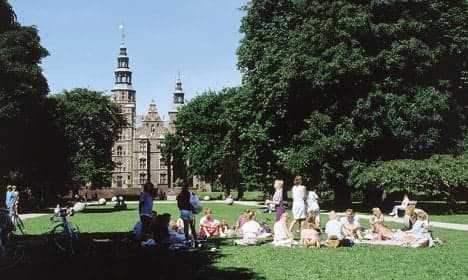
Relocation expert Melanie Haynes offers these ten tips for making your kroner go further in the Danish capital.
Just last month, the Economist Intelligence Unit's 2016 Worldwide Cost of Living survey found Copenhagen to be the eighth most expensive place to live in and the only Scandinavian city to make the list. We all know that things are more expensive here. I have long since stopped comparing how much things cost here versus other countries but instead concentrate on how I can get my kroner to work the best for me here.
Here are my top ten ways to save money:
1. Shop around
The obvious one is to take a little time to shop around and find the best deals on your everyday food and household needs. Over the last five years there has been a big rise in what can be described as budget supermarkets that sell many of the same branded products as other supermarkets but at a cheaper price. Shops such as Netto, Aldi and Lidl are the best ones to check out for good prices and deals. For household and personal care products Normal is well worth a visit. Another tip is to shop in the small neighbourhood greengrocers where you can pick up interesting fruit and vegetables that are sold by the weight and not prepackaged, meaning that you can buy only what you need and save money at the same time. The new concept shop, Wefood, in Amager sells food that can't be sold in the supermarkets and is at least 50 percent cheaper. Follow them on Facebook to see what they have that day.
2. Buy generic medication
Medication is pretty cheap here in general and you pay a varying cost for your prescription drugs rather than a flat fee like in the UK. Always ask for the cheapest version (generic) of the medication you need, both across the counter and on prescription, if you want to save money. There is also a scheme for eligible medicines that can be subsidised on a sliding scale which starts after you have spent 935 kroner. There are grants for very expensive medicines. To find out more about this eligibility you need to speak with your doctor.
3. Brew your own coffee
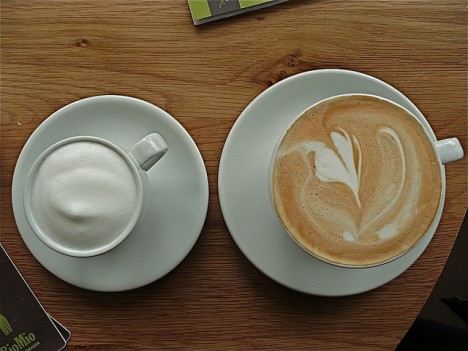
If you can live without the fancy latte design, there are cheaper ways to get your fix. Photo: AnnaKika/Flickr
The coffee shop culture in Copenhagen is huge and the prices of a cup of joe can vary wildly across the city, as can the quality. But a lot of supermarkets sell a great selection of beans and have a grinder there for you to use. One bag of my favourite coffee from Irma (Monsoon Malabar in case you are interested) costs about the same as two lattes from a reasonably priced coffee shop. Invest in a cafetiere, a milk frother, and a decent insulated travel mug and you can enjoy a decent cup without the price tag.
See also: How to eat on the cheap in Copenhagen
4. Buy secondhand
Before you spend big bucks on an electrical item, furniture or bike (just to name a few examples) check out buying secondhand options such as Den Blå Avis or one of the many online selling, giving or swapping forums. A good time to do this is around May and June when a lot of expats are on the move and selling off their worldly goods before starting again in a new country. It is obvious to say (I hope) but make sure you exercise caution on deals that seem to go to be true and take proper safety precautions when meeting with strangers to buy things.
5. Save on kids’ stuff
Flea markets start at the beginning of spring and run through autumn and as they say one person's trash is another person's treasure. The best thing for me about flea markets is the sheer amount of baby and kids' stuff you can find, normally good quality. Get to your local flea market early for the best choice and bargains. Also don't be put off if it is a bit wet as many stallholders will still show up and there will be less competition for the goods. Mødrehjælpen shops across the city are also great for baby clothes and toys.
6. Beers al fresco or old school
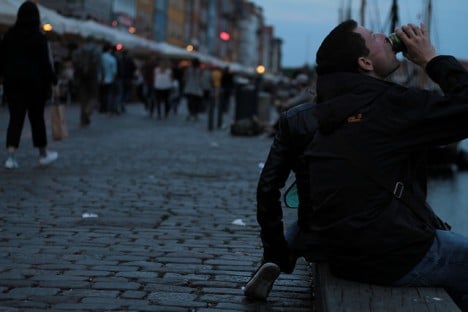
A kiosk-bought beer can be enjoyed at Nyhavn for a fraction of a cafe's cost. Photo: Elisabetta Stringhi/Flickr
Beers can be astronomically expensive here, especially in the city centre and hipper locations. If you are not bothered by secondhand smoke, or the fact the regulars may stare at you at first, check out your local pub or kro. Drinks are definitely cheaper in these places. The other option in the sunny months is to grab a six pack from the supermarket and enjoy a drink in one of the many parks or waterside areas in the city and watch the sun go down. Unlike countries like the US, it is perfectly permissible to drink in a public place, just don't get loud and lairy and take your cans home or pass them on to one of the many people wandering around collecting them to make a few kroner.
See also: Where to eat on the cheap in Copenhagen
7. Year passes and free culture
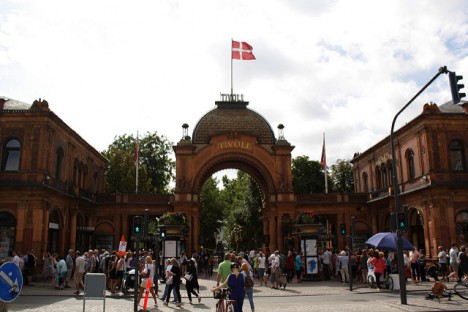
An annual pass to Tivoli can pay off within just a few visits. Photo: Blondinrikard Fröberg/Flickr
There are a lot of opportunities in the city to be cultured and many museums and galleries are free, such as the Statens Museum for Kunst (SMK) and the National Museum. Other museums will offer times free entry during certain hours, so check out the websites of the places you are interested in. Another way of saving money on culture and recreation is to buy a year pass (årskort). The best examples of great value ones are Tivoli and Copenhagen Zoo. Most places you only need to visit twice and you have made your money back and then every time after that it's free! With these passes we find we take more advantage of places and enjoy them without feeling like you have to see everything at once to justify the entry price.
8. Buy Christmas gifts and winter clothes in August
Many shops, especially Bilka, have big discounts in the summer on children's toys and winter clothes. Every year for the last three Bilka has run a 25 percent sale on all Lego in August. If you child is a Lego fanatic like mine then this is the time to put on your Santa's hat and stock up. This is also the time to get the best prices on winter clothes and it pays to act! Winter clothes come in early in Danish stores and once they are gone they don't seem to be restocked.
9. Make use of libraries
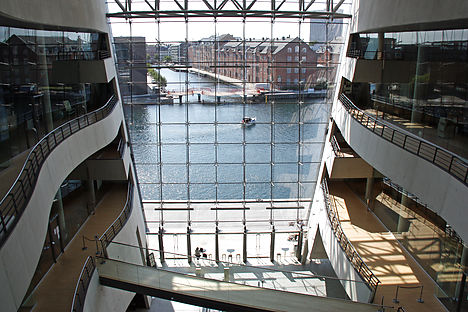
Libraries are a source of free entertainment and, in the case of the Black Diamond, excellent views. Photo: Scanpix
The library network in Copenhagen is huge and all you need is a CPR number to make the most of the borrowing services. Wifi and other facilities are available to anyone. You can use the central website to search for books (and there is a great selection of English language titles) and then request to have to the books delivered to your local library for collection and return. Libraries also have kids' play areas and many organise free events and talks. Usually these are in Danish but the Copenhagen Cultural Network organises English language events for adults and children in a few locations.
10. Savvy public transport savings
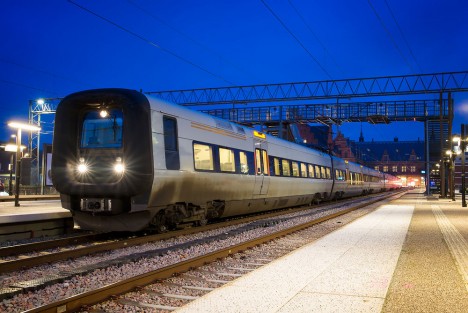
Train travel is definitely an area in which you want to buy in bulk. Photo: Scanpix
Copenhagen may have the world's most expensive single-trip tickets, but there are plenty of more costly alternatives to paying as you go. The best way to save money on transport, if you use it regularly, is to get a monthly pass with unlimited travel within your selected zones. A Rejsekort will also save you money on individual journeys if you don't travel everyday. Another tip if you are travelling out of the city to visit a museum is to see if they are part of a DSB discount scheme which saves you money on travel and entry - Louisiana is the best example of this. Finally if you are planning to use intercity trains in Denmark there are limited cheap tickets under the DSB Orange scheme which can save you an enormous amount of money if you book well in advance. Also if you are travelling in a group of three or more passengers you can take advantage of a mini group ticket which again saves you money.
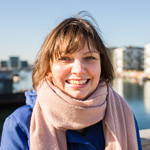 Melanie Haynes is originally from the UK and has lived in Copenhagen for eight years. She writes about life in Copenhagen on her blog Dejlige Days and after experiencing relocation to Copenhagen and Berlin, she runs a settling-in service aimed at helping expats called Dejlige Days Welcome. Her ebook, Dejlige Days: A Guide to relocation, will be published soon.
Melanie Haynes is originally from the UK and has lived in Copenhagen for eight years. She writes about life in Copenhagen on her blog Dejlige Days and after experiencing relocation to Copenhagen and Berlin, she runs a settling-in service aimed at helping expats called Dejlige Days Welcome. Her ebook, Dejlige Days: A Guide to relocation, will be published soon.
Comments
See Also
Just last month, the Economist Intelligence Unit's 2016 Worldwide Cost of Living survey found Copenhagen to be the eighth most expensive place to live in and the only Scandinavian city to make the list. We all know that things are more expensive here. I have long since stopped comparing how much things cost here versus other countries but instead concentrate on how I can get my kroner to work the best for me here.
Here are my top ten ways to save money:
1. Shop around
The obvious one is to take a little time to shop around and find the best deals on your everyday food and household needs. Over the last five years there has been a big rise in what can be described as budget supermarkets that sell many of the same branded products as other supermarkets but at a cheaper price. Shops such as Netto, Aldi and Lidl are the best ones to check out for good prices and deals. For household and personal care products Normal is well worth a visit. Another tip is to shop in the small neighbourhood greengrocers where you can pick up interesting fruit and vegetables that are sold by the weight and not prepackaged, meaning that you can buy only what you need and save money at the same time. The new concept shop, Wefood, in Amager sells food that can't be sold in the supermarkets and is at least 50 percent cheaper. Follow them on Facebook to see what they have that day.
2. Buy generic medication
Medication is pretty cheap here in general and you pay a varying cost for your prescription drugs rather than a flat fee like in the UK. Always ask for the cheapest version (generic) of the medication you need, both across the counter and on prescription, if you want to save money. There is also a scheme for eligible medicines that can be subsidised on a sliding scale which starts after you have spent 935 kroner. There are grants for very expensive medicines. To find out more about this eligibility you need to speak with your doctor.
3. Brew your own coffee

If you can live without the fancy latte design, there are cheaper ways to get your fix. Photo: AnnaKika/Flickr
The coffee shop culture in Copenhagen is huge and the prices of a cup of joe can vary wildly across the city, as can the quality. But a lot of supermarkets sell a great selection of beans and have a grinder there for you to use. One bag of my favourite coffee from Irma (Monsoon Malabar in case you are interested) costs about the same as two lattes from a reasonably priced coffee shop. Invest in a cafetiere, a milk frother, and a decent insulated travel mug and you can enjoy a decent cup without the price tag.
See also: How to eat on the cheap in Copenhagen
4. Buy secondhand
Before you spend big bucks on an electrical item, furniture or bike (just to name a few examples) check out buying secondhand options such as Den Blå Avis or one of the many online selling, giving or swapping forums. A good time to do this is around May and June when a lot of expats are on the move and selling off their worldly goods before starting again in a new country. It is obvious to say (I hope) but make sure you exercise caution on deals that seem to go to be true and take proper safety precautions when meeting with strangers to buy things.
5. Save on kids’ stuff
Flea markets start at the beginning of spring and run through autumn and as they say one person's trash is another person's treasure. The best thing for me about flea markets is the sheer amount of baby and kids' stuff you can find, normally good quality. Get to your local flea market early for the best choice and bargains. Also don't be put off if it is a bit wet as many stallholders will still show up and there will be less competition for the goods. Mødrehjælpen shops across the city are also great for baby clothes and toys.
6. Beers al fresco or old school

A kiosk-bought beer can be enjoyed at Nyhavn for a fraction of a cafe's cost. Photo: Elisabetta Stringhi/Flickr
Beers can be astronomically expensive here, especially in the city centre and hipper locations. If you are not bothered by secondhand smoke, or the fact the regulars may stare at you at first, check out your local pub or kro. Drinks are definitely cheaper in these places. The other option in the sunny months is to grab a six pack from the supermarket and enjoy a drink in one of the many parks or waterside areas in the city and watch the sun go down. Unlike countries like the US, it is perfectly permissible to drink in a public place, just don't get loud and lairy and take your cans home or pass them on to one of the many people wandering around collecting them to make a few kroner.
See also: Where to eat on the cheap in Copenhagen
7. Year passes and free culture

An annual pass to Tivoli can pay off within just a few visits. Photo: Blondinrikard Fröberg/Flickr
There are a lot of opportunities in the city to be cultured and many museums and galleries are free, such as the Statens Museum for Kunst (SMK) and the National Museum. Other museums will offer times free entry during certain hours, so check out the websites of the places you are interested in. Another way of saving money on culture and recreation is to buy a year pass (årskort). The best examples of great value ones are Tivoli and Copenhagen Zoo. Most places you only need to visit twice and you have made your money back and then every time after that it's free! With these passes we find we take more advantage of places and enjoy them without feeling like you have to see everything at once to justify the entry price.
8. Buy Christmas gifts and winter clothes in August
Many shops, especially Bilka, have big discounts in the summer on children's toys and winter clothes. Every year for the last three Bilka has run a 25 percent sale on all Lego in August. If you child is a Lego fanatic like mine then this is the time to put on your Santa's hat and stock up. This is also the time to get the best prices on winter clothes and it pays to act! Winter clothes come in early in Danish stores and once they are gone they don't seem to be restocked.
9. Make use of libraries

Libraries are a source of free entertainment and, in the case of the Black Diamond, excellent views. Photo: Scanpix
The library network in Copenhagen is huge and all you need is a CPR number to make the most of the borrowing services. Wifi and other facilities are available to anyone. You can use the central website to search for books (and there is a great selection of English language titles) and then request to have to the books delivered to your local library for collection and return. Libraries also have kids' play areas and many organise free events and talks. Usually these are in Danish but the Copenhagen Cultural Network organises English language events for adults and children in a few locations.
10. Savvy public transport savings

Train travel is definitely an area in which you want to buy in bulk. Photo: Scanpix
Copenhagen may have the world's most expensive single-trip tickets, but there are plenty of more costly alternatives to paying as you go. The best way to save money on transport, if you use it regularly, is to get a monthly pass with unlimited travel within your selected zones. A Rejsekort will also save you money on individual journeys if you don't travel everyday. Another tip if you are travelling out of the city to visit a museum is to see if they are part of a DSB discount scheme which saves you money on travel and entry - Louisiana is the best example of this. Finally if you are planning to use intercity trains in Denmark there are limited cheap tickets under the DSB Orange scheme which can save you an enormous amount of money if you book well in advance. Also if you are travelling in a group of three or more passengers you can take advantage of a mini group ticket which again saves you money.
 Melanie Haynes is originally from the UK and has lived in Copenhagen for eight years. She writes about life in Copenhagen on her blog Dejlige Days and after experiencing relocation to Copenhagen and Berlin, she runs a settling-in service aimed at helping expats called Dejlige Days Welcome. Her ebook, Dejlige Days: A Guide to relocation, will be published soon.
Melanie Haynes is originally from the UK and has lived in Copenhagen for eight years. She writes about life in Copenhagen on her blog Dejlige Days and after experiencing relocation to Copenhagen and Berlin, she runs a settling-in service aimed at helping expats called Dejlige Days Welcome. Her ebook, Dejlige Days: A Guide to relocation, will be published soon.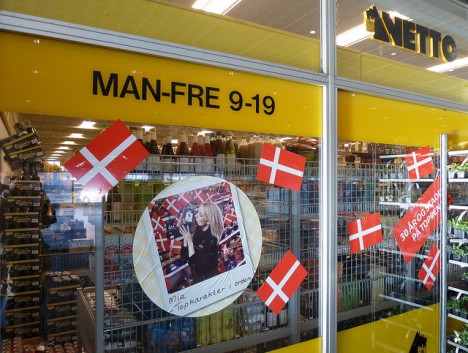
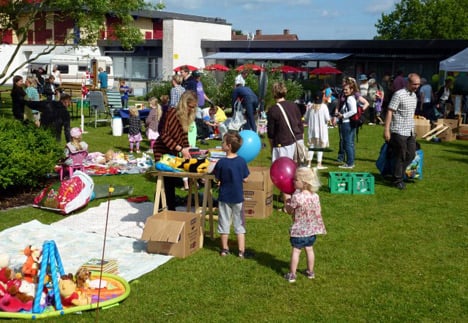
Join the conversation in our comments section below. Share your own views and experience and if you have a question or suggestion for our journalists then email us at [email protected].
Please keep comments civil, constructive and on topic – and make sure to read our terms of use before getting involved.
Please log in here to leave a comment.